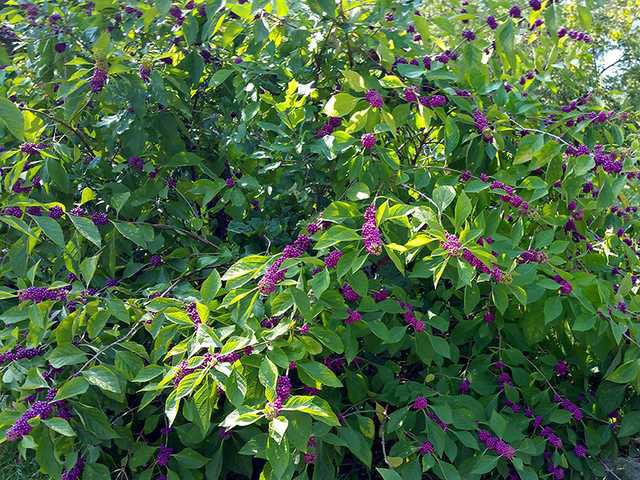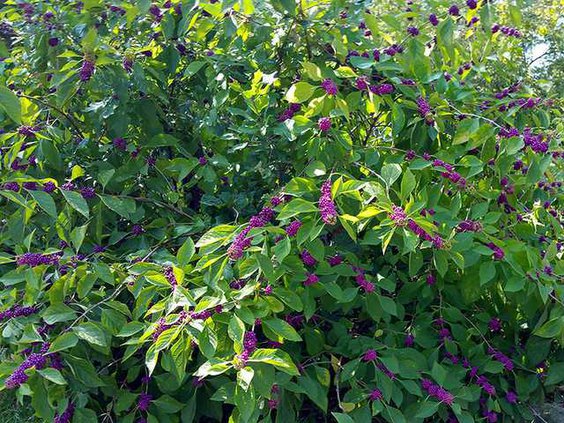Just before fall leaves turn into their bright hues, there is a native perennial shrub that is mostly found on the edges of our wooded lands. The green leafy bush can grow to three to five feet tall and wide. Under cultivation in a garden setting it may grow to 9 feet. In spring to summer it has green leaves and tiny blooms flower in very small clusters along the stalks. As fall approaches the leaves turn much lighter green and along each plant stalk groups of tiny berries ripen from green to a bright fuchsia purple color. Green berry clusters gradually ripen to dark purple from the root of the plant to the end of the branches or stalks. Flavor of the berry is rather medicinal. Berries are a food source for some birds. The leaves may be used to make a tea with curative qualities.
This plant is found in a few yards including my father’s. Nurseries cultivate it as a native plant of the southern United States. My late Mama’s cousin Lona Webb has a bush in her yard, also. Thanks Lona for the photographs I made of your bush used in this article.
My father’s Uncle Herbert Reiser called the plant “Youth and Old Age”. I had never heard another name so I went to the Internet and discovered it is named Callicarpa Americana or American Beauty Berry. It often goes by sourbush, bunchberry, purple beauty berry or French Mulberry. The roots, plants and berries were used for medicinal purposes treating malaria, dysentery, colic and rheumatism by the American Indians. The leaves are a natural insect repellant for mosquitoes. Farmers in the 20thcentury crushed the leaves and placed under harnesses of mules and horses and in their own pockets to keep the insects away.
Although the information I gleaned online states the berries are not toxic and will make a beautiful light pink colored jelly, I will not be trying this. It would take hours to harvest these tiny berries. As a natural mosquito repellant, this native shrub will be welcome in my yard.
I certainly feel blessed to pass through the fields or yard in late evening and view these bushes full of the beautiful ripening berries. This is one of fall’s early beauties that you should take time to see.
This was written by Susan Exley of Historic Effingham Society. If you have photos or historical information to share contact her at 912-754-6681 or email hesheraldexley@aol.com





